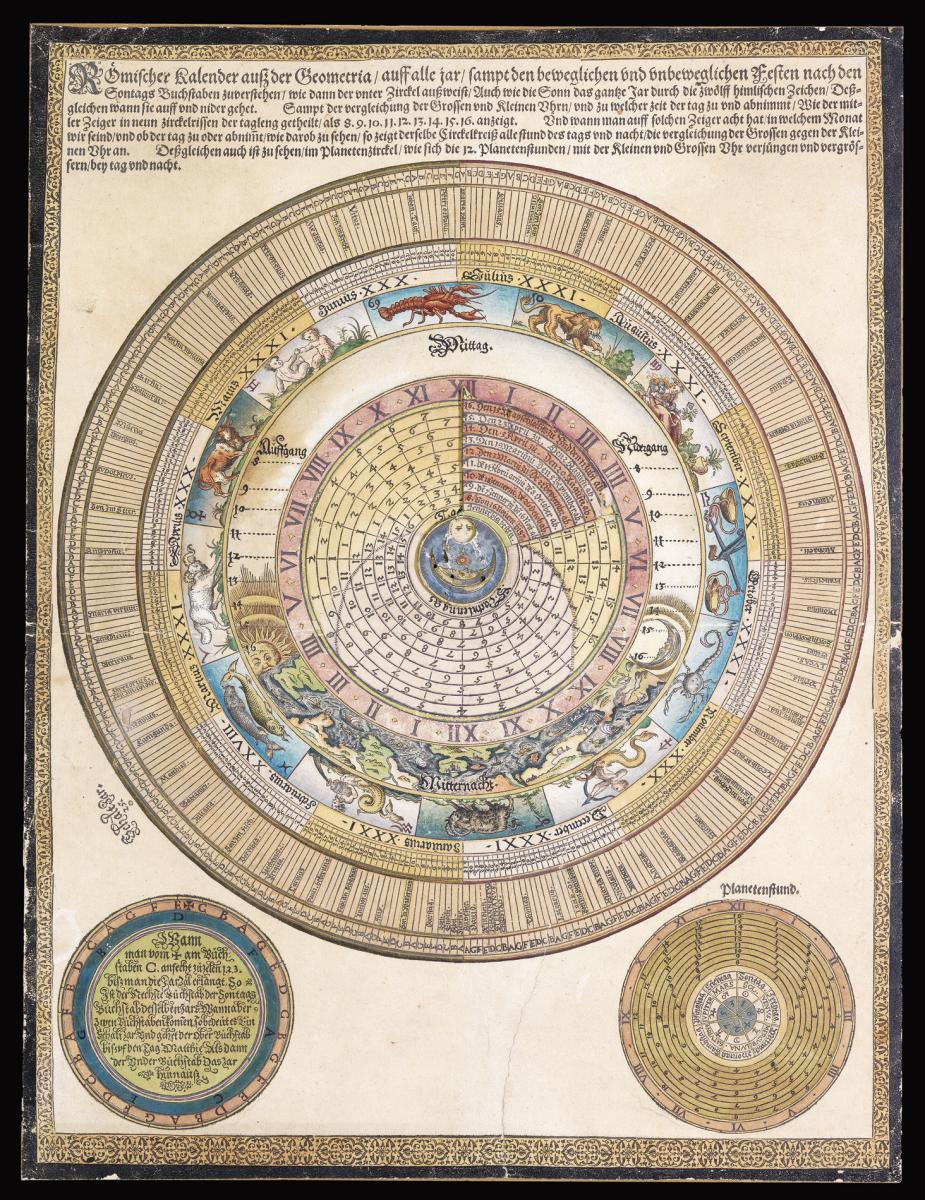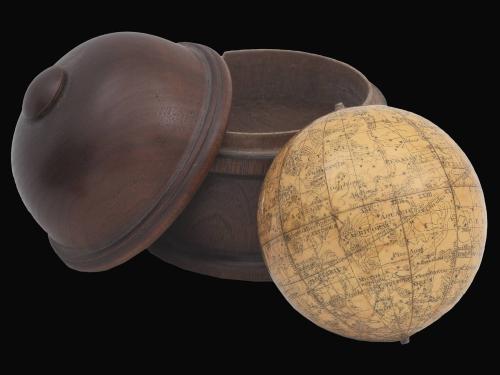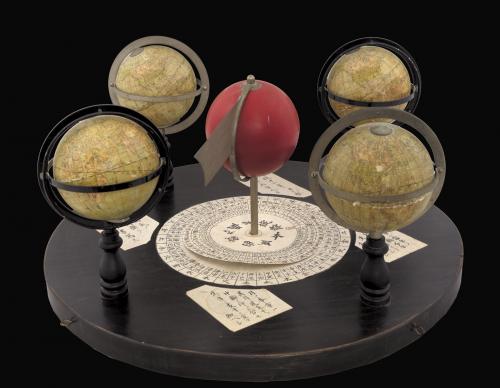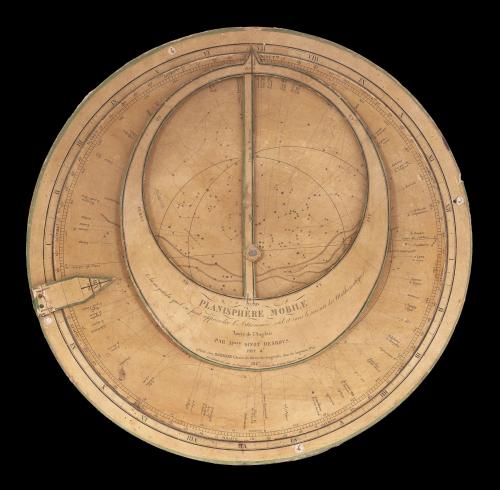

Price
£80000.00This object is eligible for a Certificate of BADA Provenance
The BADA Standard
- Since 1918, BADA has been the leading association for the antiques and fine art trade
- Members are elected for their knowledge, integrity and quality of stock
- Our clients are protected by BADA’s code of conduct
- Our dealers’ membership is reviewed and renewed annually
- Bada.org is a non-profit site: clients deal directly with members and they pay no hidden fees
Title Roemischer Kalender auss der Geometrica, auff alle jar sampt den beweglichen und unbeweglichen Festen nach den Sontags Buchstaben zuverstehen.
Author Anonymous
Publication place Nuremberg or Augsburg
Publication date second half of 16th century
Woodcut and typographic broadside, seven lines of letterpress text, large central woodcut roundel illustrated with signs of the zodiac, sun and moon phases space, topographical panorama, and feast days, volvelle at centre, two smaller roundels in lower corners, type-ornament border within outermost black border, coloured and heightened in gold by a contemporary hand, thick paper, the volvelle printed on paste-paper, verso of edges strengthened, a few neat tears repaired on verso, a few small areas of loss, some colour lightly rubbed.
Notes
A wall calendar with volvelle. Although few survive today, calendars formed a regular part of the print trade from the fifteenth century onwards and were produced at various levels of sophistication and expense. They range from simple, cheaply produced versions to elaborate examples of great artistry, such as Hans Holbein's Sun and Moon Instrument (1534).
The present example is a deluxe production: its large size is impressive; the illustrative elements, such as the astrological signs and topographical panorama, are finely executed; and it offers a complex range of calculations with the volvelle.
Furthermore, the present example has been carefully finished with colouring and gold highlights. The panorama, although schematic, appears to depict the Mediterranean, from Arabia (with a mosque surmounted by a crescent) in the east to the Iberian Peninsula in the west. The calendar is known in only one other copy, at the Herzog August Bibliothek in Wolfenbüttel, which lacks the volvelle and is uncoloured.
Content
1. outermost two circles: Sunday letters, feast days.
2. next three circles: days of the month, months, zodiacal signs, showing longitude of sun in the zodiacal signs over the course of the year, starting with Sun at beginning of Aries on 10 March.
3. next two circles: lengths of day, depending on the hours of sunrise/ sunset, and the hours of the day in Roman numerals. For example, if the sun rises at 8 a.m. (on left) and sets at 4 p.m. (on right), the day length will be eight hours.
4. next ten circles, with moving central volvelle with attached sector, divided into "nachtlenge" (lower pink section) and "tagelenge" (upper yellow section). For example, for the outermost circle, from 15 May through 11 July, the sun rises at 4 a.m. and sets at 9 p.m. giving a day length of 17 hours. The pointer on the volvelle is set to the hour of the mechanical clock (the "grosse uhr") and then read on the yellow or the pink sections the hour of the day or night, as counted from sunset or sunrise (the "kleine uhr"). Nuremberg counted hours starting at sunrise. Many towns to the east counted hours starting at sunset (Bohemian or Italian hours). The volvelle and the 10 circles permit conversion between these 3 hour-counting schemes, shifting through 9 sections of the year to adjust for the varying day lengths.
5. Small, lower right circle, "Planetenstund", illustrates which planet is ruling each hour of the day, as day lengths shift from 16 down to 8 hours. The other small, lower left circle calculates the Sunday letter for any year. The instructions say to start counting at the cross, but do not indicate what year this is. The "Schaltjar 25" is confusing, since 1524 was the Schaltjar. The cross should be 1557, 1585 or 1613.
Dimensions
458 by 347mm. (18 by 13.75 inches)Stock number
2085The BADA Standard
- Since 1918, BADA has been the leading association for the antiques and fine art trade
- Members are elected for their knowledge, integrity and quality of stock
- Our clients are protected by BADA’s code of conduct
- Our dealers’ membership is reviewed and renewed annually
- Bada.org is a non-profit site: clients deal directly with members and they pay no hidden fees




